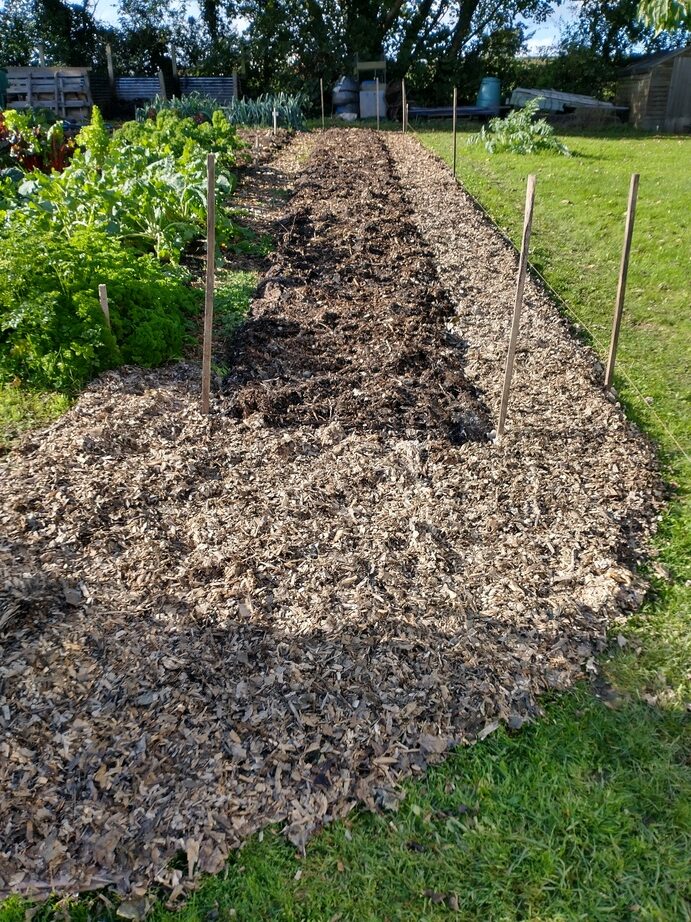A few photos from October last when I created a new no dig bed for my asparagus plants to go in (and some currants, gooseberries and a perennial kale that weren't quite planned at the time). I'd saved up a load of cardboard that I just lay on the grass.
Then piled compost on top.
I made a 2' path of woodchip all the way around it, mostly because my father-in-law mows this area with the ride-on and he's not very accurate, so the path gives him a bit of "run off" area. To my surprise, this week I discovered that 2' wasn't sufficient.
A few weeds have come through the compost and woodchip, but very few really -- couch grass and a few dandelions mostly. I've found that even if I can't completely remove them, repeatedly cutting them off below the soil level with a trowel as they regrow and removing the top slowly weakens them to the point where they die. It even works with bindweed.
These are my compost bins, "mid extension".
My father-in-law built them (to replace my previous ones that were by then too small) using the wrinkly tin perhaps eight years ago, so I did a bit of shuffling of the compost to remove the dividers (also wrinkly tin) between the bays and used them to make the back and side for two new bays on the far end, then made removable dividers (to make it easy to turn the compost between bays) from some scrap decking timber. The far bay now contains a mountain of grass that we allowed to dry on the ground before collecting it (so it's hay, effectively) which I'm told means it counts as a "brown" compost input rather than the "green" of freshly-cut grass. For me that's quite handy as we always seem to have far more "green" than "brown". I did have a dozen dumpy bags full of fallen leaves collected last autumn hiding behind the bays that I was mixing in as a "brown", but those are running a bit low now.
I'm toying with the idea of adding a roof over the bays so I can save the water for use in the garden (and potentially put a temporary rack out of the rain over the top of a bay to put onions and garlic on to dry.
A while back I worked out roughly how much compost I'd need to continue "no dig" for the eight 1.2m x 15m-ish beds in the main plot, plus the 10'x10' greenhouse and 30'x14' polytunnel -- a growing area of about 140m² (apologies for the mixture of units). I think it came out at something like eight tonnes per year. If one of the compost bins is filled to the top it ends up about a third full by the time it has broken down and comes out somewhere around a tonne, perhaps a little more, so I'm still going to need to buy a little extra in for the time being, but I have plans

This evening I've been using the compost in the nearest bay to "earth up" my potatoes, but before I started I took this photo.
The tunnels are mesh to prevent pests (mostly flea beetle and aphids at this point) getting at the brassicas. Once they get taller I'll replace them with butterfly netting supported on stakes. The nearest bed in this photo is the one I was creating in the first photo, with the perennial kale at this end and a double row of asparagus going down the bed.
I don't appear to have recent photos of the main greenhouse or polytunnel, but these are of the polytunnel late last September. Mostly tomatoes and peppers at this point, but the triffid-like tangle at the back left is actually cucumbers and a butternut squash (the final two of which we ate last week).
James
























































